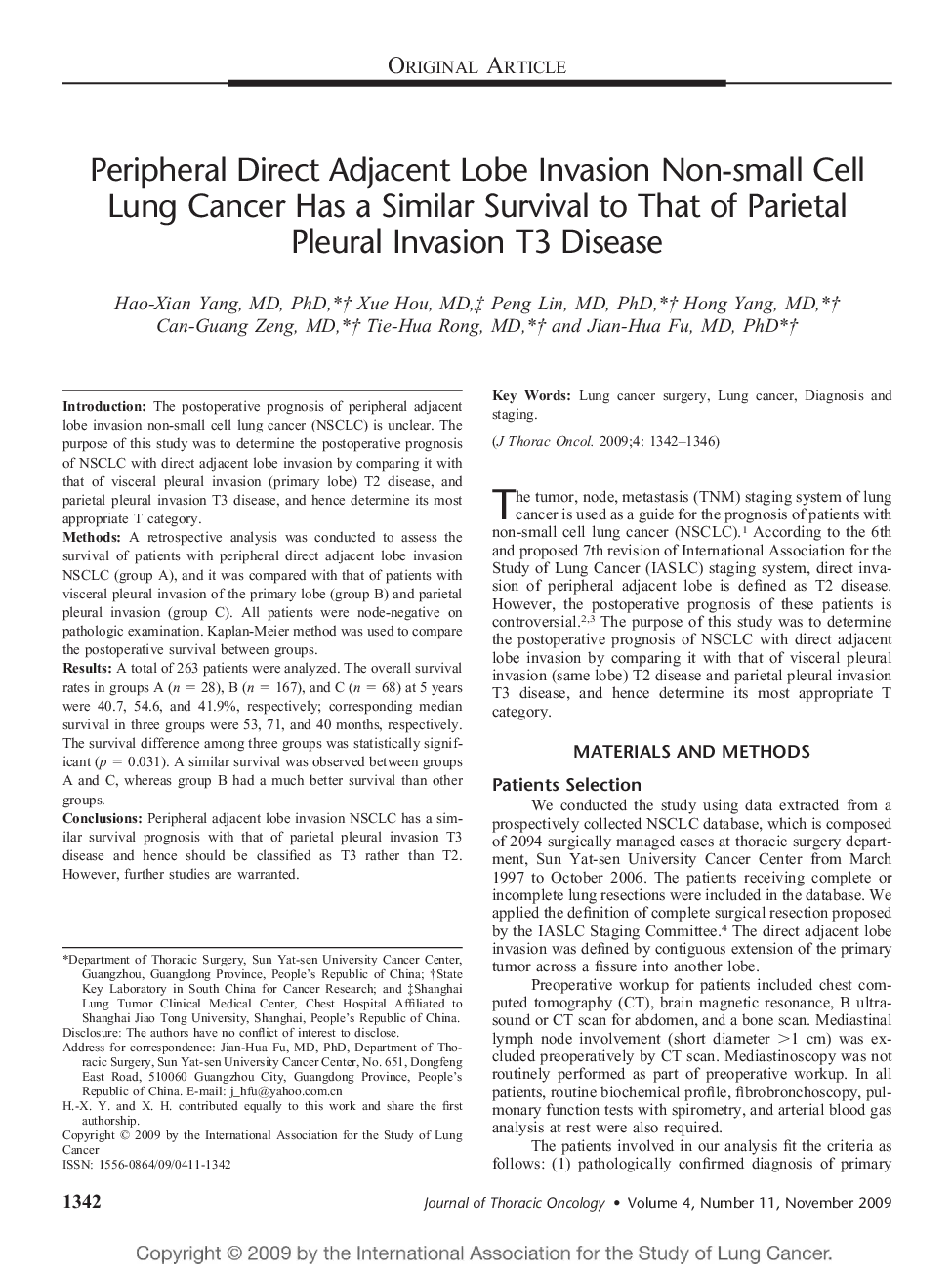| Article ID | Journal | Published Year | Pages | File Type |
|---|---|---|---|---|
| 3990630 | Journal of Thoracic Oncology | 2009 | 5 Pages |
IntroductionThe postoperative prognosis of peripheral adjacent lobe invasion non-small cell lung cancer (NSCLC) is unclear. The purpose of this study was to determine the postoperative prognosis of NSCLC with direct adjacent lobe invasion by comparing it with that of visceral pleural invasion (primary lobe) T2 disease, and parietal pleural invasion T3 disease, and hence determine its most appropriate T category.MethodsA retrospective analysis was conducted to assess the survival of patients with peripheral direct adjacent lobe invasion NSCLC (group A), and it was compared with that of patients with visceral pleural invasion of the primary lobe (group B) and parietal pleural invasion (group C). All patients were node-negative on pathologic examination. Kaplan-Meier method was used to compare the postoperative survival between groups.ResultsA total of 263 patients were analyzed. The overall survival rates in groups A (n = 28), B (n = 167), and C (n = 68) at 5 years were 40.7, 54.6, and 41.9%, respectively; corresponding median survival in three groups were 53, 71, and 40 months, respectively. The survival difference among three groups was statistically significant (p = 0.031). A similar survival was observed between groups A and C, whereas group B had a much better survival than other groups.ConclusionsPeripheral adjacent lobe invasion NSCLC has a similar survival prognosis with that of parietal pleural invasion T3 disease and hence should be classified as T3 rather than T2. However, further studies are warranted.
